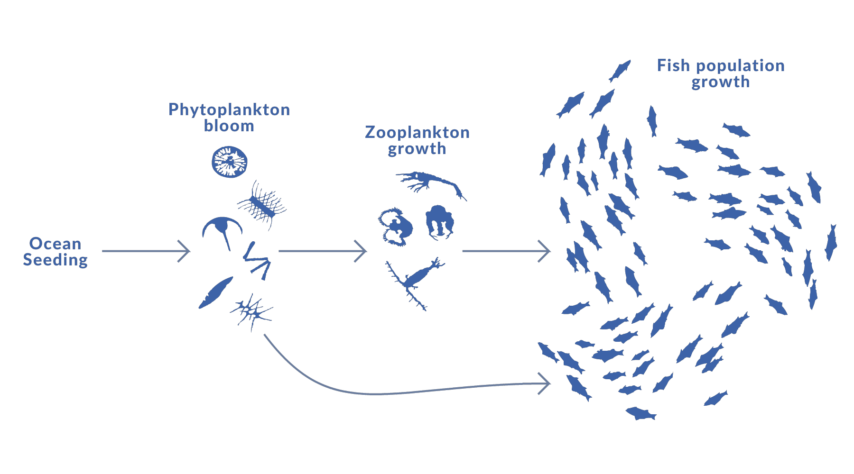WHAT IS OCEAN SEEDING?
Ocean fertilization is the natural process by which iron particles reach the sunlit upper layers of the ocean and enhance primary productivity. This can happen due to upwelling currents at the western seaboard of continents, iceberg melting, seasonal glacier runoff, riverine input, iron-rich dust in winds, and volcanic eruptions that deposit iron over the ocean surface.
More specifically, ocean iron fertilization, commonly abbreviated as OIF, is the artificial mimicry of ocean fertilization. OIF adds iron to nutrient-limited areas of the ocean, and it has been implemented in the past to study the flow of carbon in the marine ecosystem, testing ideas related to carbon dioxide removal from the atmosphere to mitigate climate change. Therefore, OIF has a been historically linked to geoengineering.
In contrast, Ocean Seeding is the application of iron for the purpose of enhancing primary productivity and the trophic cascade that depends on the phytoplankton bloom, specifically diatoms, for energy and nutrients. Ocean Seeding tests hypotheses related to marine ecology and trophic dynamics, in order to build a better understanding of energy pathways in the marine food web. Under this research focus, Ocean Seeding is not geoengineering.
